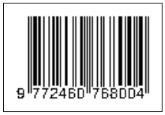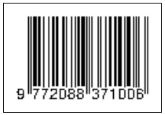Building an Unmanned Aerial Vehicle for Humanitarian Aid Delivery
Atar Fuady Babgei(1*), Heri Suryoatmojo(2)
(1) Faculty of Intelligent Electrical Technology and Informatics, Institut Teknologi Sepuluh Nopember, Surabaya
(2) 2Faculty of Intelligent Electrical Technology and Informatics, Institut Teknologi Sepuluh Nopember, Surabaya
(*) Corresponding Author
Abstract
When an emergency occurs, immediate responses are needed for the affected areas. Conventional means of transportation often face difficulties carrying supplies to the location in need, especially in severely damaged areas.
In this project, a small semi-autonomous unmanned aerial vehicle (UAV) was designed and constructed to undertake a representative humanitarian aid mission. The system has a novel hex-rotor design with overlapping propellers. Half of the motors have been turned upside down with a slight overlap between each propeller, hence reducing the total dimension of the system without losing its efficiency. The system is also equipped with a new lightweight servo activated two ring release system, allowing it to carry and release two kilograms of payloads with only small physical force needed.
Overall, the system is capable to operate automatically while performing a series of tasks such as navigate waypoints and deliver payloads before returning to base. the system created in this project could deliver two individual payloads of 1 kg each to the pre-destinated target almost autonomously. The system provided promising results that encourage the utilization of UAV for delivering Humanitarian Aid.
Keywords
Full Text:
PDFReferences
B. Vitoriano, M. T. Ortuño, G. Tirado, and J. Montero, “A multi-criteria optimization model for humanitarian aid distribution,” J. Glob. Optim., vol. 51, no. 2, pp. 189–208, Oct. 2011, doi: 10.1007/s10898-010-9603-z.
L. de O. Silva, R. A. de Mello Bandeira, and V. B. Gouvêa Campos, “The use of UAV and geographic information systems for facility location in a post-disaster scenario,” Transp. Res. Procedia, vol. 27, pp. 1137–1145, Jan. 2017, doi: 10.1016/j.trpro.2017.12.031.
M. A. R. Estrada and A. Ndoma, “The uses of unmanned aerial vehicles –UAV’s- (or drones) in social logistic: Natural disasters response and humanitarian relief aid,” Procedia Comput. Sci., vol. 149, pp. 375–383, Jan. 2019, doi: 10.1016/j.procs.2019.01.151.
J. Belliveau, “Humanitarian Access and Technology: Opportunities and Applications,” Procedia Eng., vol. 159, pp. 300–306, Jan. 2016, doi: 10.1016/j.proeng.2016.08.182.
E. Frachtenberg, “Practical Drone Delivery,” Computer, vol. 52, no. 12, pp. 53–57, Dec. 2019, doi: 10.1109/MC.2019.2942290.
“Amazon And Drones -- Here Is Why It Will Work.” https://www.forbes.com/sites/stevebanker/2013/12/19/amazon-drones-here-is-why-it-will-work/#77e6daec5e7d (accessed Mar. 30, 2020).
“Drone delivery: DHL ‘parcelcopter’ flies to German isle - Reuters.” https://www.reuters.com/article/us-deutsche-post-drones/drone-delivery-dhl-parcelcopter-flies-to-german-isle-idUSKCN0HJ1ED20140924 (accessed Mar. 30, 2020).
W.-C. Chiang, Y. Li, J. Shang, and T. L. Urban, “Impact of drone delivery on sustainability and cost: Realizing the UAV potential through vehicle routing optimization,” Appl. Energy, vol. 242, pp. 1164–1175, May 2019, doi: 10.1016/j.apenergy.2019.03.117.
A. Goodchild and J. Toy, “Delivery by drone: An evaluation of unmanned aerial vehicle technology in reducing CO2 emissions in the delivery service industry,” Transp. Res. Part Transp. Environ., vol. 61, pp. 58–67, Jun. 2018, doi: 10.1016/j.trd.2017.02.017.
J. E. Scott and C. H. Scott, “Drone Delivery Models for Medical Emergencies,” in Delivering Superior Health and Wellness Management with IoT and Analytics, N. Wickramasinghe and F. Bodendorf, Eds. Cham: Springer International Publishing, 2020, pp. 69–85.
C. A. Thiels, J. M. Aho, S. P. Zietlow, and D. H. Jenkins, “Use of Unmanned Aerial Vehicles for Medical Product Transport,” Air Med. J., vol. 34, no. 2, pp. 104–108, Mar. 2015, doi: 10.1016/j.amj.2014.10.011.
M. Fleck, “Usability of Lightweight Defibrillators for UAV Delivery,” in Proceedings of the 2016 CHI Conference Extended Abstracts on Human Factors in Computing Systems, San Jose, California, USA, May 2016, pp. 3056–3061, doi: 10.1145/2851581.2892288.
J. Sanfridsson et al., “Drone delivery of an automated external defibrillator – a mixed method simulation study of bystander experience,” Scand. J. Trauma Resusc. Emerg. Med., vol. 27, no. 1, p. 40, Apr. 2019, doi: 10.1186/s13049-019-0622-6.
D. E. Boehm, A. Chen, N. Chung, and R. Malik, “Designing an Unmanned Aerial Vehicle ( UAV ) for Humanitarian Aid.”
K. T. San, S. J. Mun, Y. H. Choe, and Y. S. Chang, “UAV Delivery Monitoring System,” MATEC Web Conf., vol. 151, p. 04011, 2018, doi: 10.1051/matecconf/201815104011.
B. Vergouw, H. Nagel, G. Bondt, and B. Custers, “Drone Technology: Types, Payloads, Applications, Frequency Spectrum Issues and Future Developments,” in The Future of Drone Use: Opportunities and Threats from Ethical and Legal Perspectives, B. Custers, Ed. The Hague: T.M.C. Asser Press, 2016, pp. 21–45.
G. Nandakumar, A. Srinivasan, and A. Thondiyath, “Theoretical and Experimental Investigations on the Effect of Overlap and Offset on the Design of a Novel Quadrotor Configuration, VOOPS,” J. Intell. Robot. Syst., vol. 92, no. 3, pp. 615–628, Dec. 2018, doi: 10.1007/s10846-017-0707-2.
W. R. Booth, “Means for releasably attaching strands,” US4337913A, Jul. 06, 1982.
L. Meier, P. Tanskanen, F. Fraundorfer, and M. Pollefeys, “PIXHAWK: A system for autonomous flight using onboard computer vision,” in 2011 IEEE International Conference on Robotics and Automation, May 2011, pp. 2992–2997, doi: 10.1109/ICRA.2011.5980229.
“Mission Planner Home — Mission Planner documentation.” https://ardupilot.org/planner/ (accessed Mar. 31, 2020).
Article Metrics
Refbacks
- There are currently no refbacks.
Copyright (c) 2020 IJEIS (Indonesian Journal of Electronics and Instrumentation Systems)

This work is licensed under a Creative Commons Attribution-ShareAlike 4.0 International License.
View My Stats1







